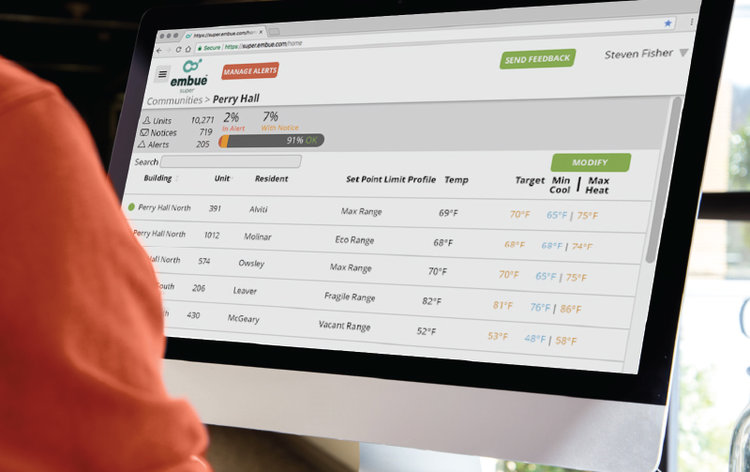Older multifamily units are being examined for possible efficiency improvements through automation. Many, built before central air conditioning was available, are still populated with window AC units that are a significant energy waste. With the extreme heat being experienced across the country in 2022, those units are running overtime, inefficiently cooling apartments during unoccupied hours as well as times when people need that cooling.
Air conditioning units are second only to heating as the most expensive appliance to run in the home, so making them more efficient is one of the first steps towards achieving a fully smart energy system that saves money, lowers energy usage, reduces carbon emissions, and improves resident comfort and satisfaction.
Window and sleeve air conditioning monitoring and control is a crucial component in improving efficiency and resident comfort in older buildings without central air conditioning systems. Control of window and sleeve air conditioning units also enables owners and operators to flexibly and automatically raise and lower cooling setpoints to reduce peak load through Demand Response programs.
Embue is a provider of whole building intelligence, automation, and control for multifamily apartment building portfolios and its smart building platform now includes the control of window air conditioning units and PTAC (Packaged Terminal Air Conditioners). Building owners can easily reduce energy costs and carbon emissions by automating these units by connecting them to run on operational schedules, to detect when they are malfunctioning, to be operated based on relative humidity, and to ensure proper temperature is achieved in each unit.
Air conditioning monitoring and control is the latest functionality available on the Embue platform, providing multifamily owners and operators with visibility and control of every apartment, common area, and piece of equipment in the building to significantly improve energy efficiency, carbon reduction, staff productivity, and resident comfort.
In an Embue-enabled building, sensors and controllers placed throughout the building deliver information to Embue Super, a building wide dashboard that can be used by building management to control and automate units and to make decisions around comfort and efficiency. Embue’s occupancy-prediction machine learning algorithms can sense whether residents are home or not and turn the system on or off accordingly. It can also adapt to users’ schedules, turning on shortly before they arrive home.
Air conditioning control can be paired with Embue sensors to provide more accurate comfort control, greater energy efficiency, and to monitor humidity levels to ensure healthy living environments. For example, if paired with Embue window open/close sensors, when a window is opened, the air conditioning can automatically be turned down or off to save energy.
If desired, residents can even be given remote access via the Embue Remote app to ensure comfort, allowing them to turn their AC on shortly before arriving home, so residents can come home to a pre-cooled room, without wasting energy. For those residents who pay for electricity, this is a great solution.
Embue can be customized for the needs of each property to provide its signature flexible setpoint limits and flexible thermostat feature visibility and offers a range of IoT (Internet of Things) devices that work with the platform to monitor the building for resident discomfort and harmful conditions, like water leaks and high humidity, and sub-optimal conditions.
Embue provides end-to-end insight and control of the entire property and makes the property more efficient to manage through a dashboard that provides control, automation, and insights property-wide. With Embue, apartment buildings can become 25% more energy and carbon efficient and staff 30% more efficient on key tasks. Embue is installed or under contract in nearly 6,000 units at major national portfolios, with a rapidly growing footprint in 10 states.
Want to tweet about this article? Use hashtags #construction #sustainability #IoT #AI #cloud


